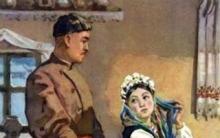Some people call this dance “Hardstyle”, which is completely wrong, because:
- The term " Hardstyle"is used in a fairly large number of dances and emphasizes the rigidity of performance.
- Hardstyle is a style of electronic music, not a dance to which it is danced.
The main basis of the shuffle (Running Man) consists of a combination of two movements (hops).
The combination of movements itself is usually called “shuffling” (which translated from English means dragging your feet, shuffling, sliding your feet along the floor).
Sliding movements left or right, then forward and backward. When the shuffler moves like this, it seems as if he is “weightless” and is not affected by gravity.
Sliding spot used in the intervals between the previous and new movements, so as not to stand in one place and move all the time.
Using this movement, the shuffler can rest and adjust to the beat (measure) of the music. Also, the shuffler can step back, exit the dance using this movement, and "release" another dancer into the dance. But most often this movement is used to be on the move all the time.
The triangular shuffle consists of very energetic steps and movements.
Typical movements
The modern shuffle is danced in combinations of 5 different steps:
Runningman(running Man)
- basic, one of the most popular movements, when the shuffler moves in place. One foot rises from the "waiting" position and moves forward, while the other foot simultaneously slides backward. Then the foot that is already behind slides to its original position, and the foot in front returns back. The process is repeated to the beat of the music.
Teshka(T-movement shuffle).
The shuffler moves to the right with the left foot, then to the left. This foot moves only left and right (back and forth), while the right foot moves up and down. This combination of movements should be similar to the letter T. This movement is the most popular among shufflers.
Slide(sliding).
The most common sliding movements.
Spin(scroll).
They can be “normal” or “inverted”, that is, vice versa. Normal scrolling is performed to rotate the body clockwise. Inverted scrolling is the same thing, but counterclockwise. Both scrolls are performed in random order during the dance.
Kick(kick).
Hitting your feet on the floor or in the air. One foot is in front, the second foot hits the floor or the air in the place of the first foot. As the first foot moves, the second one hits the place of the first foot. The height of the legs at impact can be low or high (the knees rise almost to the waist). The kicking point is balanced and controlled.
Many shuffle dance moves are taken from other styles such as miming, popping, locking, liquidating, And breaking, which eventually mixed, “combined.”
History of origin
Shuffle is one of several dances that originated during the music style era acidhouse.
Over time, genre acidhouse became more diverse and split into two different sub-styles with the same philosophy: back step And shuffling. Shuffle continued to develop in Melbourne nightclubs and other rave scenes over the years.
Many events, clubs, communities have been involved in the development of this style of dance over the years.
Chronology
Late 1980s to early 1990s
The Melbourne Shuffle is beginning to emerge as a dance in its own right, incorporating more arm movements than previous styles. Techno music was gradually replaced by trance music and house music.
Mid 1990s
A number of documentary-style videos during this era gave rise to the style, and the popularity of the shuffle increased. There are many variations of this dance, but the basic movements remain the key movements giving it the term " MelbourneShuffle».
Early 2000 - present
In 2006, with the advent Youtube, dancers internationally are now connected by the Internet, with shufflers posting their own videos of dancing and teaching.
Music
Initially, in the late 80s, in Melbourne the shuffle was danced to acidhouse and regular house(classical). In the early 90s they began to dance it to Trance, then the speed of this dance increased. In 2007, in Melbourne they already began to dance to hardtrance, hardstyle, hardhouse, tribalhouse, techno And hardtechno.
Dance styles
Melbourne shuffle is divided into two main styles:
AustraliaStyle(AUS)
- the main, very first directions of Shuffle, which are still popular today, include such types as Hardstyle (the most popular, the body is slightly tilted), Soft (straight body, sliding predominates over blows), NewSchool (straight body, a lot of sliding, hand work), OldSchool (soft style, almost no use of arms and body), Pure (Instead of Running Man, only Teshka is used).
MalaysiaStyle(MAS)
— Appeared later in Malaysia and quickly began to develop. They are also divided into SOFT (soft, only the arms work, without the body), HARD (hard, the body and arms constantly work), STOMP (the body is tilted), PURE (T is used instead of RM, jumps and spins are used), OLDSCHOOL (RM is done on the heels, T is done not 3-4 times, as in other styles, but 7 or more).
Promotion
This dance began to be promoted by various DJs and partygoers from other countries who came to raves in Australia, in Melbourne. They dance the shuffle not for competition, but for themselves, for pleasure and self-expression. When training, professional shufflers ensured that each dancer had his own individual and unique style.
Some dancers sprinkled talcum powder on the dance floor to make it easier for their feet to slide. Thus, the sliding speed increased. By the way, some clubs still sprinkle the floor with talcum powder.
Striptease, Strip plastic, Pillon
Striptease is the art of seduction... It is interesting because it can reveal femininity, sensuality and sexuality in the dancer. Becoming on par with a man, the woman of our time increasingly forgets to be a woman. Strip classes refresh your instincts, break the shackles of constraint, and teach you to express feelings and emotions. Pole classes, in turn, provide amazing physical training.
Difficulties: requires rhythmic gymnastics skills, good stretching and a beautiful figure.
Upper Break Dance, Dup Step, Popping, Electric Boogie
Dancers of these genres are real “dance magicians”, originating from the art of pantomime. What they do is amazing! Not for nothing, today there is no one cooler than breakers in modern dance. In their performances we see the highest level of control over the body, the most complex elements, so unimaginable that sometimes it’s even painful to watch. Delight bordering on horror!
Difficulties: To really achieve something in breakdancing, you need to dedicate yourself to it. And you need to be extremely careful, there are some injuries.
Go-Go, Waaking, Vogue
Just what you need for fashionistas who crave the stage! The highest degree of posing and acting. They play on the grace of shapes and lines, which advantageously reveal the beauty of a half-naked body. Vogue and Waaking are "pathos for white people." Vogue style is characterized by the posing of models, it imitates catwalk walking. The Waaking style, which took a lot from Vogue, is dominated by hand movements (the name itself translates as “waving hands”), many of the movements they borrowed from locking. Go-Go is a freer style, in which the previous two were mixed and elements of other styles, such as strip, were added. This is the most popular style of dancing nightclubs.
Difficulties: excellent physical qualities and moral readiness to perform on stage in practically underwear are required.
Jazz Modern, Contemporary Dance
A modern interpretation of ballet that preserves aesthetic traditions, but gives freedom and flexibility of technique, abolishing the rigid standards of the classics. These styles are based on choreography. Most higher educational institutions represent contemporary dance as Contemporary. But the paradox is that this genre is completely unsuitable for dancing to modern dance music. This is a purely stage dance technique.
Difficulties: to achieve success in this style, you need to practice since childhood.
Classic. Choreography
The highest “theatrical” form of choreographic art, the embodiment of the highest aesthetic ideals. This is an exclusively stage dance, focused on the viewer. It is characterized by strict standards and high requirements for performance techniques, many of which are carried out to the limit of human capabilities. In terms of complexity, the elements of ballet can only be compared with the elements of breakdancing.
Difficulties: professional ballet classes do not pass without a trace. Extremely high demands leave an imprint on the formation of the body, especially because you need to practice ballet from childhood, while the body is still pliable. Possible damage to ligaments, tendons, joints, overdeveloped individual muscle groups and much more.
Latin American dancing, salsa, hustle
These directions are extremely popular today. It's not just dancing, it's leisure, communication, discos. These styles bring people together: energetic, passionate movements, exciting swaying of the hips... Although these are mostly pair dances, they are organized in such a way that you can easily change partners and make new acquaintances. And they do not require special training; they are quite simple to learn.
Difficulties: at the initial stage, there are few difficulties for those who like it, the main thing is to find a suitable partner.
Lower Break Dance
The low break is a masterpiece of our time, bordering on the impossible, going beyond the limits of human capabilities. It incorporates the elements and style of Hip-Hop culture and is performed to DubStep or Hip-Hop music. The technical essence of the style is control of “torque” in all possible positions, i.e. continue to rotate when changing position on any support points, even on the head. This is the most complex acrobatics superimposed on the rhythms of music. Suitable for short, stocky dancers.
Challenges: It is extremely difficult to prevent injuries
Flamenco
Spanish folk dance with obligatory traditional costumes. Flamenco is particularly dramatic and attracts a fairly mature audience. It is a spectacular and expressive genre filled with passion. He is characterized by a specific choreography of his hands, active tap-dancing trills and luxurious steps in the flounces of chic skirts in the gypsy style.
Difficulties: a keen sense of rhythm is required
Oriental dance, Tribal
The art of seduction, erotic dance of the East (ancient striptease). It is performed in specific costumes with ringing scales, which enhances the musicality of the dance and synchronization with the music. Oriental dance is rich in all kinds of techniques in plasticity, rhythm, and is replete with small details and decorations. Truly professional dancers fascinate with the beauty of the curves of their half-naked body and clear, finely drawn movements. Unlike other styles, “oriental dancers” delight with the expressiveness of their curvaceous forms and their ability to advantageously reveal the features of the female figure.
Difficulties: minor shaking, vibrations are harmful to the not yet formed female body.
Basics of modern dance, improvisation for the dance floor
Modern Dance Base- dance format for the dance floor, suitable for music of different genres. This is a universal dance technique that can be combined with any style, type and manner. There is no need to memorize dance sequences and choreographies; the dance is built on the principle of a designer: there are basic elements and rules for how they are combined with each other. Having studied several movements and learned how to combine them with each other, you can improvise to different music; several months of training are enough for this. The entire dance is based on rhythm, plasticity and coordination of movements.
Difficulties: to achieve beauty and ease in improvisation, it takes time to restore atrophied muscle groups.
Shuffle, House, ElectroDance, Tecktonik, C-walk
Active styles for expressive youth: techniques with swings and jumps to music with a direct rhythm. Extremely energy-consuming, attract a lot of attention and require a lot of space. You will be unlucky if you find yourself next to such a dancer on a packed dance floor, fortunately this does not happen often, but at street festivals these styles have become a hit! These techniques turn you on - you just want to join in and start dancing. But there are not enough dancers for long, because... the set of movements is not particularly large or varied, and all are quite energetic.
Difficulties: finding a place to perform them
R'n'B, Hip-Hop
Initially, R’n’B is the culture of funk, jazz and soul. She also contributed to the emergence of rock and roll. Subsequently, R’n’B and Hip-Hop began to actively mix, because they are both part of African American culture. Today, R’n’B as a dance includes any possible techniques, but all of them are performed in a particularly pretentious manner, in the obligatory ultra-fashionable outfit. R’n’B classes are an excellent solution for those who want to “show themselves.” This style gives self-confidence, a feeling of one’s own coolness and sexuality, it is a cure for complexes and insecurities, which young people so lack; that is why this is a purely youth movement.
Hip-hop, however, is a serious direction, where the pathos are justified by the really cool training of dancers who do not neglect breakdancing.
Difficulties: constant psychological pressure within the team, where the spirit of struggle and competition reigns.
Ballroom dancing
Pair dance with strict choreographic standards. Dancers are completely attached to their partner, who is extremely difficult to replace.
Flaws: injuries, occupational diseases. Considering that this is a professional dance for participation in competitions, the departure of a partner almost always entails the collapse of the dancer’s professional career.
Advantages: fully reveals the topic of interaction with a partner. The highest form of possible pair dance art.
Strip
This is the most ancient, and at the same time the most modern style of dance. It is constantly changing, as the standards of femininity and masculinity change. You can dance it in different ways, but the meaning does not change. This is a dance that arouses sexual interest, allowing you to enjoy your image, the effect you produce. This is the most emotional style of dance, in which the characteristics of male and female movements are maximally expressed. There is a very fine line here that separates the most beautiful and the most disgusting. Therefore, a highly qualified choreographer is simply necessary.
Club dance
The broad concept of “club dance” includes many movements of various styles. They can be performed synchronously or solo. Club dance today is divided into 2 directions: to music with a straight rhythm and to music with a broken rhythm. Straight rhythm is classic electronic music like Disco House, Techno, Progressive. Broken rhythm is a break beat, breaks, R’n’B, Hip-Hop.
Jazz - Modern
Originating at the time of the relevance of ballroom dancing, modern jazz is a combination of classical techniques, street dance styles, and jazz improvisation.
Top break dance
A combination of all “old school” styles, such as plastic, slides, king-tat, robot. Break Dancing is exciting, vibrant, and colorful. For this reason it has become very popular. Break dancing first appeared in the South Bronx (Big Up's to da Bronx!) in the 70s. At first it was danced on cardboard boxes laid out on the street, which turned the sidewalk into a stage. Street dancers mixed aerobatic dance with martial arts and disco dance, and each performer crafted his own style. Music flowed from portable stereo recorders. Now this is a personal way to get in shape and have fun!
Go-Go
A dance technique that allows you to excite a crowd of spectators using standard artistic techniques, wide, amplitude movements that capture attention, courage and play. One of the main elements of Go-Go is the expression of sexuality and minimal clothing.
Street dance
In the early 70s in the United States, a huge number of groups were formed dancing in the streets, which later turned into culture. It incorporates a popular form filled with elements of various dance styles.
Stage, power style of synchronized dance, allowing you to work on quality and endurance. A large number of synchronized sequences of popular movements and courage are presented.
Power dance style for the stage, where movements are performed with full force and at high speed. This style features a large number of “wide” movements, swings, rotations and turns.
Slide man (Moon Walk)
All kinds of moonwalks in all directions. This technique is perfectly combined with plastic. The style is based on moonwalks, which give the illusory effect of gliding across the floor. The style includes more than 20 types of gaits. Swimming or sliding on the floor is an illusion created with your feet. This creates the feeling that you are trying to go in one direction, but you are actually moving in another. A classic example of this effect is the 'Moonwalk' made by the famous Michael Jackson. Factual illusion is an old Pantomime trick.
Disco
As a result of the “psychedelic revolution” of the late 60s, a culture of music, fashion, and dance was formed. The manifestation of one’s individuality in this form is still relevant today. The disco style influenced many other styles that appeared later.
R&B
It has gained great popularity all over the world thanks to the music it is performed to. This super-fashionable dance trend helps you acquire not only excellent sports shape, but also provides an opportunity to show “aerobatics” in clubs. The style evolved from “Hip-Hop” and became more diverse and complex. The abbreviation “R&B” stands for “Rhythm and Blues”. As a rule, it is danced at the level of improvisation.
Trance
Trance, as a stylization of dance technique, with a softer nature of movements based on the specific features of electronic trance music, has mainly absorbed movements that can be performed by anyone without special physical training. This is a dance of deep feelings that are not always clear to others.
The 1920s is the decade of jazz in the United States. Part of the African-American population, who moved from the South to the North in search of work, brought music with them: jazz, blues, ragtime. New movements appeared in the dances, sometimes similar to the habits of animals. Dancing is becoming a new form of leisure for the masses. Long and complex dance patterns are replaced by improvisation. Social boundaries are also being erased; dancing is now for all segments of society.
Charleston
Its origin is unknown. Residents of the city of Charleston in the southern United States credit themselves with the invention of the dance. Others call it the birthplace of Cape Verde. Be that as it may, one thing is clear - Charleston has African roots.
At first it was danced by black workers to jazz music, so the Charleston was associated with the lower strata. The church did not favor him because of his sharp, loose movements and the closeness between a man and a woman. However, it was appreciated in basements, illegal casinos and pubs, where Charleston was taken up by opponents of Prohibition and flappers - girls who advocated the emancipation of women.
Gradually, Charleston spread throughout the country, and then crossed the ocean and reached Europe. Representatives of high society who wanted to learn to dance asked their servants to do so - there were simply no proper official schools at that time.
The Charleston can be danced with a partner, alone or with a group. The main feature is the movements of the legs - while the arms remain in a relaxed position and lend themselves to the general tact. The movements, despite the speed and tempo, are not too complex - professionals say there are about 74 of them. However, there is no clear pattern according to which you need to dance. Improvisation and the right mood are important here.
Foxtrot
This couples dance appeared in the 1910s, but became widespread in the 1920s. According to one version, it was invented by actor Harry Fox: at one of the film screenings, a young man needed to fill a pause between films, and then he started dancing with a girl. According to another version, foxtrot is translated as “walking at a fox’s pace” - due to the similarity of the movements with the habits of the animal.
During the foxtrot, dancing couples move quickly around the hall, which at first glance resembles a waltz. However, the tempo is completely different, due to the fact that the dance is performed to ragtime.
Over time, many versions of the foxtrot have appeared. Nowadays the fast foxtrot (or quistep), the slow foxtrot and the folk one are known. In the fast version, the tempo of the music increases, and the dance becomes more energetic, almost crazy. A slow foxtrot, on the contrary, looks romantic. It was popular in England and Soviet Russia - directors Vsevolod Meyerhold and Nikolai Foregger even staged it in their performances.
Tango
Tango was created by emigrants in Buenos Aires. Initially it was performed only by men. It was a kind of competition - sometimes for a woman, and sometimes just for fun. Only later did a partner appear in tango, dressed in a tight skirt with a slit up to the thigh, fishnet tights and high-heeled shoes.
For a long time, tango remained a dance for the lower classes; it was danced in taverns and other not very decent establishments. However, then he gets to Europe, where he has tremendous success. The dance was especially appreciated in Paris. The Church considered dance vulgar and corrupting.
Tango is characterized by a fast rhythm and connection between partners. Tango is always about emotions and passionate love.
Black Bottom
Black Bottom is one of the few dances whose origins we know. It appeared in the state of Georgia, USA, in the impoverished “black bottom” area (which, in fact, gave the dance its name “Black-Bottom”). At the beginning of the century, it was performed in the south of the country by the African population and consisted of combinations of movements of the shoulders and hips. In 1924, its modernized version appeared on stage in the play “Dina,” after which the dance quickly gained popularity and captured all of America. From the cabaret he moves to the people and finds himself among the social dances that people perform for entertainment.
Basically, the black bottom was a solo dance, but it could also be performed opposite your partner or in groups. The dance consists of kicking, jumping back and forth, stomping, hip rotation and much more. In this case, as in the Charleston, the hands give in to the general wave of the dance. However, unlike the Charleston, in solo performance the Black Bottom movements are more energetic, and its repertoire includes more cheerful forms.
In the second half of the 1920s, black bottom was more popular than other dances. However, already in the next decade, interest in it disappeared.
Shim-sham Shimmy
Shim-sham is a part of tap dancing. It is danced almost on the spot, and the main movements are performed with the feet in a certain sequence. Shim-sham was invented by the duo of dancers Leonard Reed and Willie Bryant. They performed with the Whitman Sisters, who had one of the longest running shows in the States (from 1900 to 1943). In the 1920s, the sisters invited young people to come up with a finale that they could all perform together as an encore after a vaudeville show. It had to be something that not only tap dancers, but also singers and musicians could handle. The part really turned out to be quite simple, so any artist could perform it without preparation. So Reed and Willie became the creators of shim-sham. It was originally performed as a comedy dance with upbeat music "Turkey in the Straw" and was called "Gufos". But over time, it turned into an independent number that was performed on stage.
The diversity of 1920s dances doesn't end there. In addition to those listed, there were many more subtypes that could be performed differently in each tavern. They gave rise to swing, Lindy hop, boogie-woogie and many other dances that gained popularity already in the 1930s.
You can learn about many dances from the 1920s at Swing.School. Anyone can sign up for free lessons in the Garden named after. Bauman, and there is a special offer for readers of diletant.media - free two weeks of training in the Hot Club group using the promo code DILETANT28. Registration for classes -











Tsarevo █ Church of St. Nicholas the Wonderworker Tsarevo parish festive service June 05
Revival of the Sergius Church
Annexation of the Crimean Khanate to Russia Abolition of duties and the mint
Church of St. Dmitry the Myrrh-Streaming in the field
Group Bible Reading and Study Time of Voluntary Infirmity